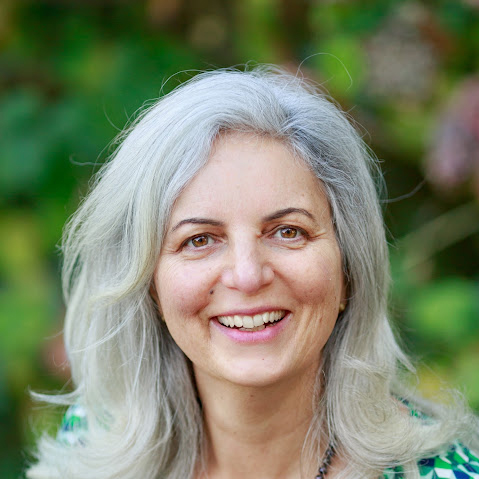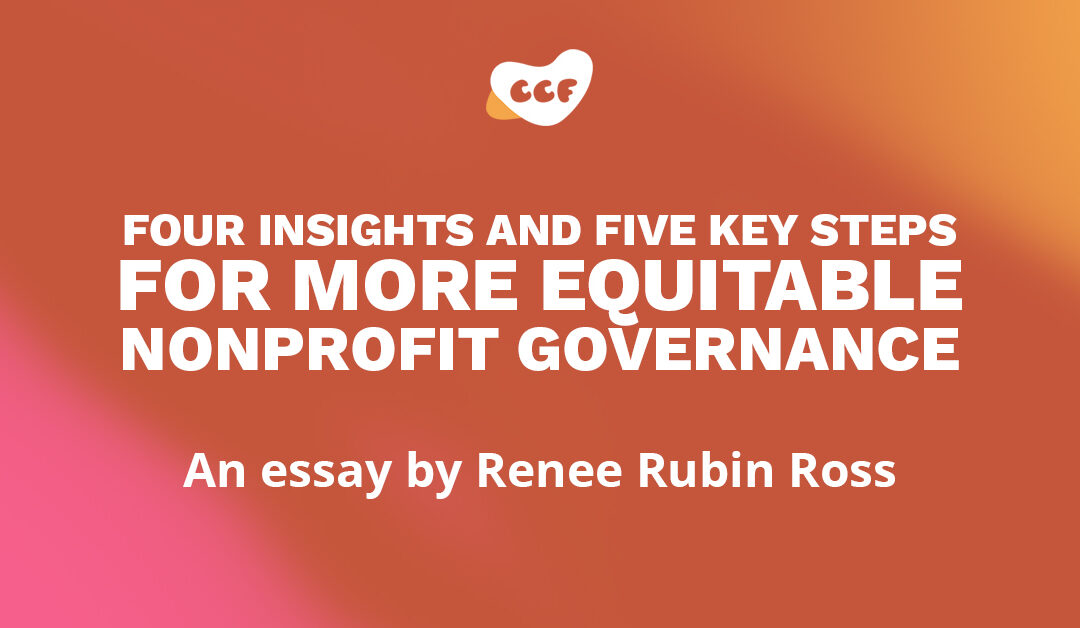By Renee Rubin Ross, strategic planning and governance consultant
Long ago, I worked as a staff person alongside a terrible board.
The staff was thoughtful and strategic. We were deeply knowledgeable about our work, connected, and networked in the community.
But the board? Being on this board was a symbol of having power in the community. They were (mostly) nice people who (mostly) meant well…except when they didn’t.
At least one board member was known to make comments in board meetings about our community partners that went completely against the values of the organization. As a staff person, it was demoralizing to hear these comments from individuals who had power over our work.
Board members frequently ignored or reversed staff suggestions in ways that dismissed our strategic planning and thinking and wasted a lot of everyone’s time.
A large part of our work became attempting to manage these board members.
And the irony was that because board members were powerful community members, no one was willing to name the “truth” of what was taking place.
Is it #AllBoards?
I know – I had a bad experience, and not all boards are that bad! 😊
I now serve as a board member and served on other boards in the past. The Ross Collective works with many delightful, thoughtful, justice-oriented board members who care deeply about the work of the nonprofits they serve. Many are investing significant resources – their time, money, networks, and brain power! — to support and strengthen organizations and their communities.
And despite the positive, my early concerns about boards stayed with me.
Those of us who work closely with nonprofit boards or serve on boards know that a high percentage of boards are not working. And the challenges in terms of the stresses that boards are experiencing (racial injustice, inequities, workplace burnout, uncertainty in the larger economic environment) have increased over the past few years.
But what instead? I am working on a research project with my colleagues Christal Cherry and Andy Robinson to explore alternative models. We are hardly the first to say that boards aren’t working; we’re joining the chorus of leaders like Vu Le, Hildy Gottleib, and many others in exploring new models.
Boards’ dysfunction frequently comes from structural and cultural causes.
There is a myth that more training will support boards to be better.
Training can be good. If I take on the responsibility of serving on a board, it is important to know what is involved.
But in my initial example of the “terrible board,” these individuals had served on many boards. More instruction would not have helped.
The problem was that the board had too much power relative to the staff and the community served.
In researching this project, I connected with Lauren Johnson, the Executive Director of SVP Portland (SVP), who recently underwent a governance restructuring process over the past few years.
Four insights emerge from research:
1. The Why for this process came from a genuine desire to be an anti-racist organization and walk their talk towards sharing power.
As Johnson explains, a 2012 strategic planning revealed that despite successful growth of the organizations in which SVP invested their resources, “community-level outcomes were getting worse.” This led to soul-searching about SVP’s work in the community and an awareness that the organization had an opportunity to shift from investing in different issue areas annually to focusing on a community-level goal: that all children access quality preschool. When they did this, it became clear that systemic racism created the disparities in early learning. This served as a catalyst for centering DEI in all they do, and expanding their strategies to include advocacy, influence, and systems change.
It takes time, effort, and motivation to make this shift. Starting with a clear and compelling Why, shared across the organization, will energize the process when it gets hard.
2. Stop talking about “boards.” Instead think about “governance” – the process of making decisions and guiding the vision of the organization’s work.
The Reimagining Governance project describes governance as “a framework of responsibilities, requirements, and accountabilities within which organizations operate, including regulatory, audit and reporting requirements, and relationships with key stakeholders.”
In other words, what needs to happen, and who can do this work?
Through a listening tour, SVP Portland learned that their community partners – including nonprofit Executive Directors – were interested in sharing their input on SVP’s direction but did not want to take on the heavier commitment of Board service.
“We heard, ‘I don’t need to be on your board,” Johnson explains. “But I do want to be involved in the strategic decisions that impact my organization and community,”
Consequently, SVP Portland spent a year conducting research and building a new model. The purpose was to decentralize decision-making and shift power. Ultimately, they created a “minimum functioning board” with fewer members that retain only the responsibilities as required by law. The other responsibilities are distributed to those closest to the work – sometimes staff and sometimes standing committees.
SVP also set up “Dynamic Teams” that work on short-term, critical questions facing the organization. The first dynamic team explored the role that SVP Portland would take on in terms of advocacy. It was composed primarily of BIPOC community leaders (who were compensated for their time), as well as SVP staff and volunteers. Participants collectively brought diverse perspectives, advocacy expertise, and an understanding of SVP’s strengths and limitations. This team did not “advise” the Board, but was fully empowered to make decisions for SVP.
3. Participation matters. As organizations shift towards better governance, those closest to the problems should be leading toward the solutions.
The governance change process at SVP Portland was informed by a diverse team – which is how The Ross Collective is now leading many of the strategic planning and governance processes we facilitate. SVP sought input from BIPOC leaders about opportunities for sharing power and how they want to engage, and SVP responded to it directly, not just in words but in structure, policies, and actions. They engaged the community in decisions that mattered to them and impacted their work. The Ross Collective works in this way, understanding that any one person cannot represent all people with that lived experience. By leading that way, we are expressing our commitment that perspectives informed by lived experiences must be at the front of the room, in power, in all conversations.
4. Shifting structure is not enough.
A while ago, I learned about a prominent nonprofit organization that has put many staff people on their board, so almost half of the board members are staff members.
Which sounds like it would equalize power between the board and staff.
But what actually happened?
From my understanding, final decisions are made by the Executive Director – not the board. The Executive Director is the person with ultimate power. And the larger group has not been able to have an intentional conversation about who has power and how decisions are made.
Five key steps for more equitable governance
This stuff is challenging!
And I know that this cannot be too abstract. In addition to advising boards, I literally “teach the course” on Board Governance at Cal State University East Bay. Our students are nonprofit leaders and board members who ask us about actionable steps toward new governance models.
From everything we are learning, here are five key steps for more equitable governance:
- Start with the organizational Why.
- Take some time to look at the different parts of governance and who is currently doing them. Challenge assumptions.
- If possible, find guidance from facilitators with the experience to lead a change process.
- Ensure that people with lived experience lead or co-lead the change process and authentically engage in decision-making.
- Make sure to intentionally explore power and decision-making, and then shift policies, structures, culture, and practices to align with values and intentions for disrupting power imbalances.
As you read this, you may be thinking, “I know that there’s so much about our board that is not working anymore. But how can we find the time and energy to take it all apart – before we put it back together?”
We have seen boards put these steps into place and shift the way that they work. You can do it too. And if you need support, reach out, we’d be happy to discuss.

Dr. Renee Rubin Ross
Dr. Renee Rubin Ross (she/her), founder of The Ross Collective, leads strategic planning and governance processes that create clarity, energy and justice. She also directs the Cal State East Bay Nonprofit Certificate Program and teaches for the program. Subscribe to The Ross Collective e-list for free actionable tips on nonprofit strategy, racial equity and leadership or connect with Renee on LinkedIn.
Discover more from CCF
Subscribe to get the latest posts sent to your email.

